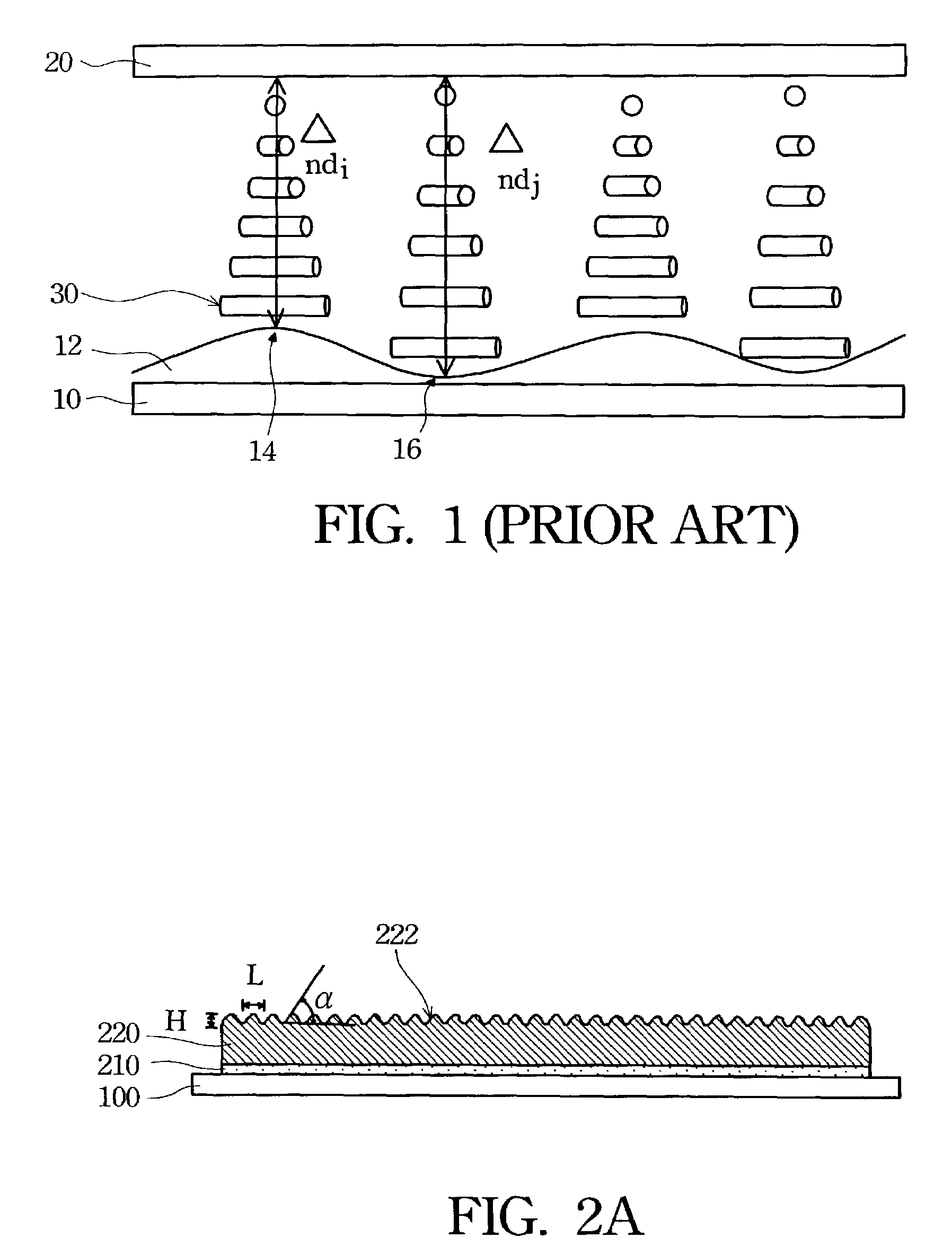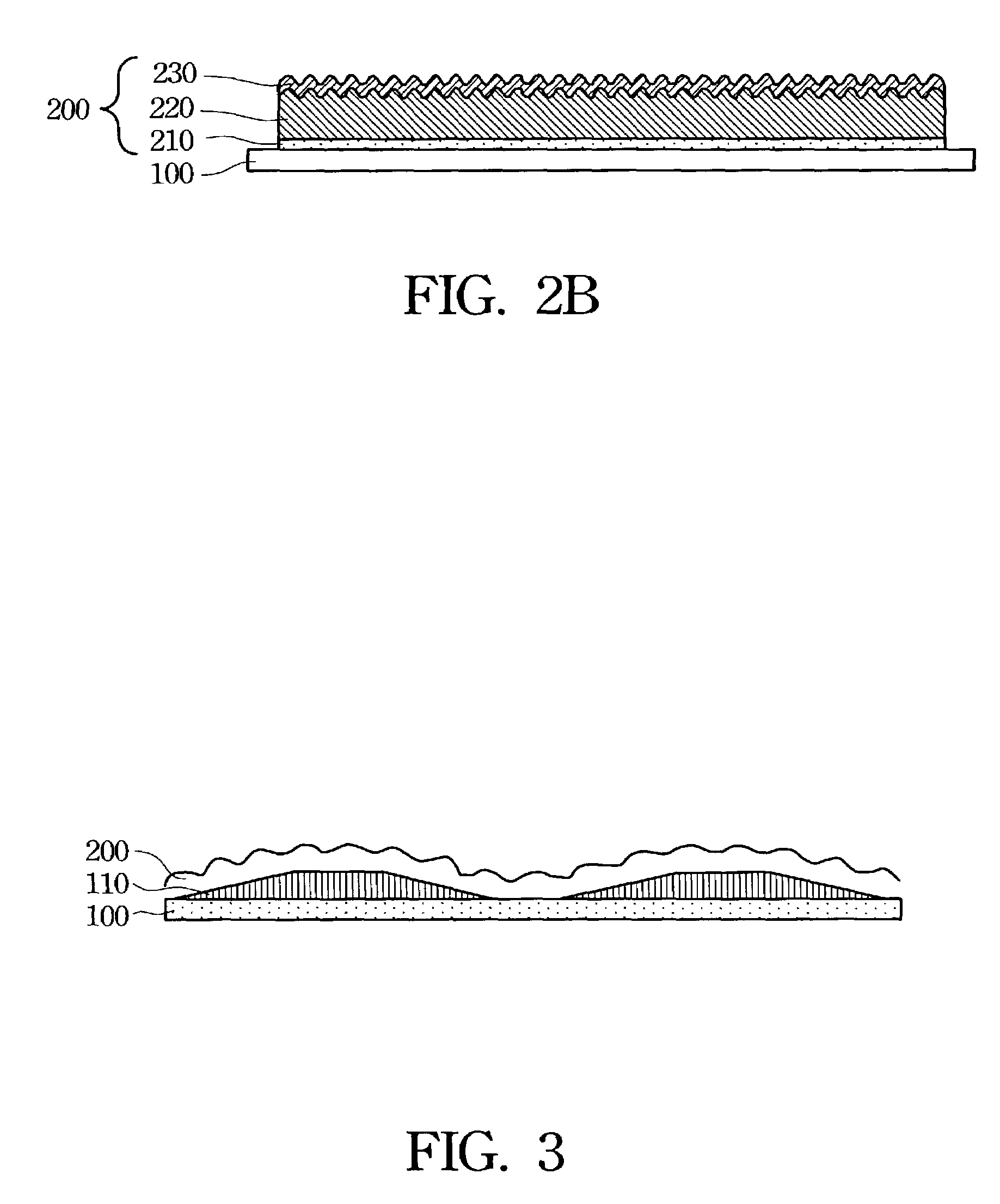Roughness reflective layer for pixel designed thin film transistor and liquid crystal display
a thin film transistor and liquid crystal display technology, applied in non-linear optics, instruments, optics, etc., can solve the problem of unsolved reflective lcd problem, reduce the contrast to form fuzzy images, and so as to improve the reflective light angle, reduce the change value of retardation, and improve the effect of reflective efficiency
- Summary
- Abstract
- Description
- Claims
- Application Information
AI Technical Summary
Benefits of technology
Problems solved by technology
Method used
Image
Examples
first embodiment
[0039]First, the ultra minimal reflective layer is formed on the bottom layer to form a common layer with the first metal conductive line layer in accordance with the first embodiment. FIG. 5A is a schematic, top view of an ultra minimal reflective layer and the first conductive line layer in accordance with the first embodiment of the present invention. FIG. 5B is a schematic, cross-sectional drawing from the I—I line of the FIG. 5A of an ultra minimal reflective layer and the first metal conductive line layer in accordance with the first embodiment of the present invention. Referring to FIG. 5A and FIG. 5B, a gate electrode 510 and a gate conductive line 510a connected with the gate electrode 510 are first formed over the substrate 500 when fabricating a thin film transistor. A storage capacitor 700 is formed in this position corresponding to the gate electrode 510 while fabricating the gate electrode 510. An ultra minimal reflective layer 600 is disposed between the storage capac...
second embodiment
[0041]The ultra minimal reflective layer of the present invention, in addition to being formed in the bottom layer, can also be formed in the second layer to form a common layer with the conductive line located in the second layer. FIG. 6A is a schematic, top view of an ultra minimal reflective layer and the second metal conductive line layer in accordance with the second embodiment of the present invention. FIG. 6B is a schematic, cross-sectional drawing along the II—II line of FIG. 6A of an ultra minimal reflective layer and the second metal conductive line layer in accordance with the second embodiment of the present invention. Referring to FIG. 6A and FIG. 6B, a gate electrode 510 and a gate conductive line 510a connected with the gate electrode 510 is first formed over the substrate 500 when fabricating a thin film transistor. A storage capacitor 700 is formed in this position corresponding to the gate electrode 510 while fabricating the gate electrode 510. A first dielectric l...
third embodiment
[0044]The ultra minimal reflective layer can also be formed in the third layer to form a common layer with the transparent electrode in accordance with the third embodiment. FIG. 7A is a schematic, top view of an ultra minimal reflective layer and the third conductive line layer in accordance with the third embodiment of the present invention. FIG. 7B is a schematic, cross-sectional drawing along the III—III line of the FIG. 7A of an ultra minimal reflective layer and the third metal conductive line layer in accordance with the third embodiment of the present invention. Referring to FIG. 7A and FIG. 7B, a gate electrode 510 and a gate conductive line 510a connected with the gate electrode 510 are first formed over the substrate 500 when fabricating a thin film transistor. A storage capacitor 700 is formed in this position corresponding to the gate electrode 510 while fabricating the gate electrode 510. A first dielectric layer 512 is formed over the whole substrate 500 after finishi...
PUM
 Login to View More
Login to View More Abstract
Description
Claims
Application Information
 Login to View More
Login to View More - R&D
- Intellectual Property
- Life Sciences
- Materials
- Tech Scout
- Unparalleled Data Quality
- Higher Quality Content
- 60% Fewer Hallucinations
Browse by: Latest US Patents, China's latest patents, Technical Efficacy Thesaurus, Application Domain, Technology Topic, Popular Technical Reports.
© 2025 PatSnap. All rights reserved.Legal|Privacy policy|Modern Slavery Act Transparency Statement|Sitemap|About US| Contact US: help@patsnap.com



